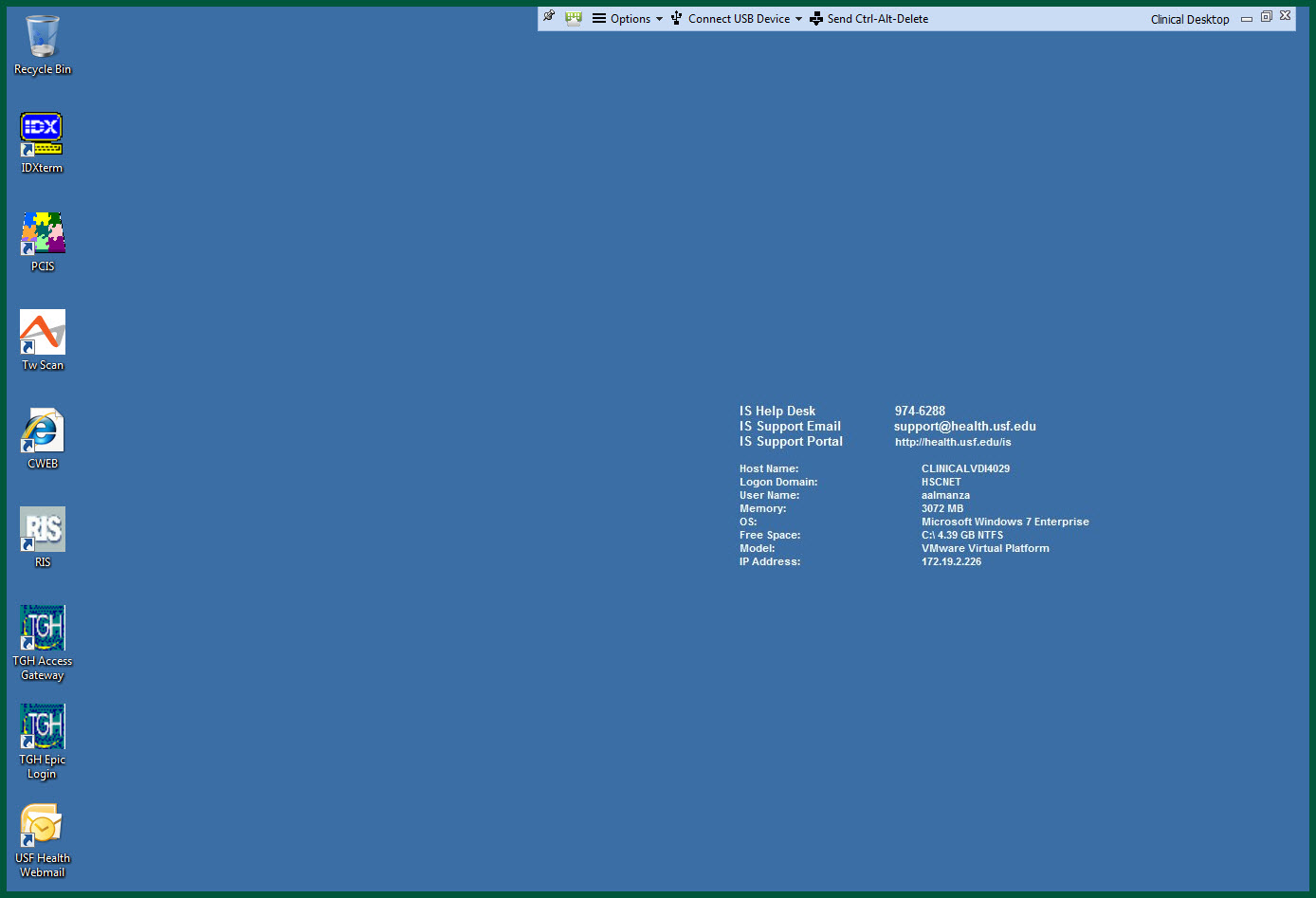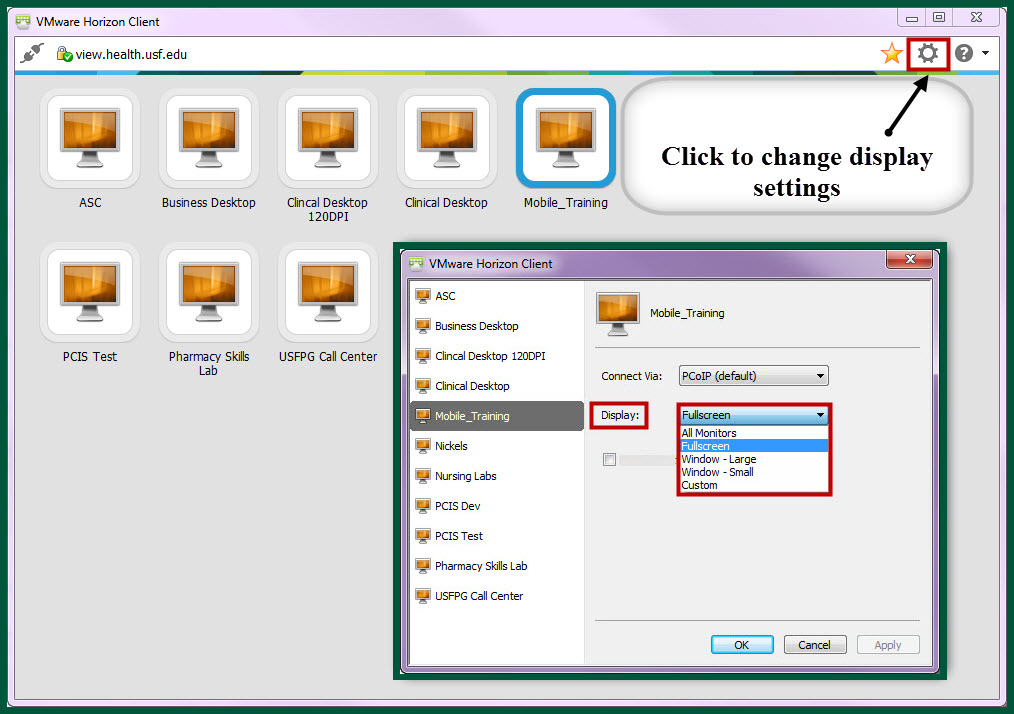VMware View Client allows you to access a desktop remotely as a virtual desktop. This job aid will instruct you on how to download and install the View Client and navigate the VMware View. The steps may vary depending on your operating system.
The following topics are provided:
| Toc |
|---|
| Note |
|---|
| The operating system used in this job aid is Windows 7 with Internet Explorer 8 as the browser. If you use a different operating system, some of the steps may vary. |
Install View Client
Locate Navigate to this website and download the appropriate download client for your operating system .
The Product download details page will open.Note title Virtual Desktop Client 32-bit Windows View Virtual Desktop client
Click Download.
The File Download dialog box will open.
Click Runas prompted.
Run the file that is downloaded.
Note title NOTE A User Account Control dialog box may open, asking if you want to allow the changes to be made to your computer. If this occurs, click Yes.
The VMware View Horizon Client Install Wizard will open. See Figure 3.
Figure : VMware View Horizon Client Installation Wizard.- Click Next.
This will bring you to the License Agreement prompt. - Select I accept the terms in the license agreement. See Figure .
Figure : User License Agreement screen.
- Click Next.
- In the Custom Setup dialog box Click Next. See Figure .
Figure : Custom setup screen. - The Default Server dialog box displays.
- In the Default Horizon Connection Server field type: view.health.usf.edu. See Figure .
Figure : VMWare Connection Server Screen. - Click Next.
- In the Enhanced Single Sign on dialog box Click Next. See Figure .
Figure : VMWare Single Sign On Screen.
- In the Configure Shortcuts dialog box, Click Next. See Figure .
Figure : VMWare Configure Shortcuts screen.
The Ready to install VMWare Horizon Client dialog box displays. - Click Install. See Figure .
Figure : Ready to install client screen. - A status screen will display in a dialog box.
- Click Finish when the process has completed.
The VMware Client icon will display on your desktop/taskbar and you may be asked to restart your computer.
Access VMware View
- Double-click VMware View Client on your desktop. See Figure .
Figure : VMWare Desktop Icon. - The VMWare Horizon Client box will open. See Figure .
Figure : VMWare Client Box. Click image to enlarge. - Double-click the view.health.usf.edu Icon.
The Connection Server field should default with view.health.usf.edu. See Figure .
Figure : VMWare Login Screen. Click image to enlarge. - Enter your User Name and Password.
- Click the drop-down arrow and select HSCNET as the domain.
- Click Login.
A dialog box will open, listing all the VMware Client Views you have access to. See Figure 5.
Figure 5: VMware Client View selection list. Click image to enlarge. Double-Click the VMware View you want to open to connect.
Warning PLEASE NOTE: Users utilizing PCIS Prenatal or PCIS My Care Team will no longer see a separate PCIS Icon in the selected view. You will now access the PCIS icon directly via the Clinical Desktop View.
- The VMware View you selected will launch, initialize, and open. See Figure 6.
Figure 6: VMware Desktop View. Click image to enlarge.
| Tip |
|---|
| When saving in the VMware View, always save to your network drive. If you save the item to the desktop, it can only be accessed from that VMware View. |
Monitor Settings
- To extend the display to a dual monitor, select the icon that is highlighted in the figure below..
- In the display drop-down menu select All Monitors.
- To display to a single monitor, in the display drop-down menu select Fullscreen. See Figure .
Figure : VMware Monitor Settings. Click image to enlarge.
Table 1 - Features available in the VMWare View Toolbar
Toolbar Options | Description |
Auto Hide | The PushPin in the toolbar represents the Auto Hide. This will allow you to hide the toolbar. |
Options | Find Details, Support and Help Information about VMware. |
Connect USB Device | Automatically or manually connect USB devices. |
Minimize ( _ ) | Minimize the VMware View desktop. |
Box ( ) | Re-size the VMware View screen. |
Exit ( X ) | Close the VMware view. This will log you out of the client. |
...











